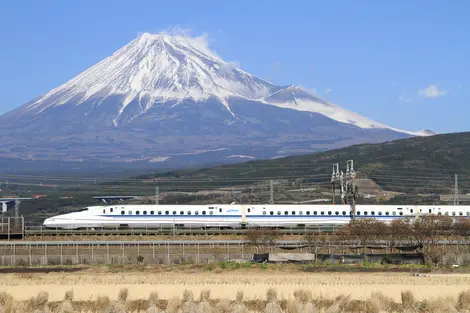The Shinkansen prototype ALFA-X 新幹線アルファエックス
Japan's need for speed
JR East has recently started testing for a new type of Shinkansen, one that's expected to reach speeds of around 400km/h, the ALFA-X. Numerous tests are needed to help improve the safety and comfort of travelers in years to come.
A new project
The latest JR East technology project is called ALFA-X, and includes the unique E956 prototype Shinkansen, foreshadowing a new generation of hardware. ALFA-X stands for Advanced Labs for Frontline Activity in rail eXperimentation, a whole program! Tests have recently started, carried out at night between Sendai and Aomori, twice weekly until 2022.
Read: The Shinkansen
The goal of these tests is, once again, to improve the Shinkansen system and its security, especially in case of earthquakes. While its maximum speed will be at least 400km/h (around 250mph) the commercial speed when carrying passengers will be around 360km/h.
Many tests are being carried out, with the aims of:
More security, with increased research into stability
Improving comfort
Improving energy efficiency and environmental impact
Reforming train maintenance
The race for technology
For almost 20 years, JR East has been at the forefront of global rail technology. In 2005, the prototype Shinkansen E954 Fastech 360S and E955 Fastech 360Z increased their speeds to 360km/h between Tokyo and Aomori. The speed of the Shinkansen series E5 and E6 finally reached 320km/h (between Utsunomiya and Morioka) in 2011. The long noses of these incredible trains are instantly recognisable.
The longest nose yet!
The somewhat iconic long 'nose', already seen on the Shinkansen series E5 and E6, will be extended even further on the ALFA-X prototype, to reach a staggering length of 22 meters for the Aomori-bound train! The reason for this is so it can maintain a high speed even when the train enters a tunnel, without our poor human eardrums being damaged. The E5 series has been proving this for years.
And with a goal of increasing the speed, it follows that it's also necessary to increase the length of the nose, to "break" the pressure when entering a tunnel at high speed. Passengers can then continue to travel comfortably. Other benefits include noise reduction and smoother travel, even at over 350km/h. Engineers therefore designed a train with the longest nose possible to carry out this long test campaign.
There's a different nose designed for the Tokyo-bound train, only 16 meters long and resembling the current E5 with small lights located at the front, as it will experience different aerodynamic aspects.
All kinds of tests
Other forms of experimentation are scattered throughout the ten cars of the Shinkansen ALFA-X, for example when it comes to the windows. We know that with the new trains that have appeared, the amount of glass surface has constantly decreased. Here, engineers will be testing different surface sizes, from the largest to the smallest, with tiny rectangular 'portholes'.
Other innovations include dampers, to improve stability in the event of a natural disaster, an underfloor designed to stop the buildup of snow and ice, on-board warning and monitoring systems, and pantographs of various kinds to improve noise reduction.
In this area, as with so many that relate to technology, Japan wants to stay ahead. This kind of experimentation should mean this happens.







